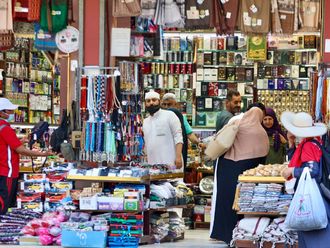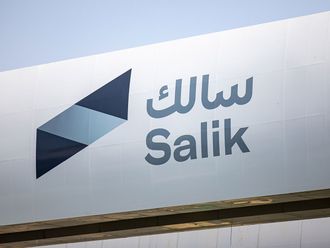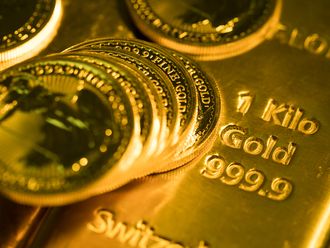Iranian officials lashed out Tuesday over the free fall of the rial, which lost nearly 25 per cent against the dollar in just a week, by blaming illegal trading rings and fiscal mismanagement, and conceding that international sanctions have hurt its economy.
The rial fluctuated between 35,500 to 40,000 to the dollar on Tuesday, according to money exchangers in Tehran. It was down from 34,200 to a dollar just a day earlier on Monday and 23,000 on September 24.
The crisis highlights Iran’s economic challenges as international sanctions are starting to have a visible impact. Inflation — estimated at about 55 per cent compared with last year for basic food, rent and transportation — would likely rise further as prices come in line with new currency rates.
For the first time, President Mahmoud Ahmadinejad publicly acknowledged Tuesday that the European Union and US embargo on Iran’s oil and Central Bank were hurting the economy.
“Two elements have joined hands to pressure the people of Iran. One is external and one is internal,” he said in live televised remarks to reporters.
Bank restrictions
Oil sales, a major source of foreign-currency revenue for the government, had dropped as a result of sanctions, he said. Banking restrictions made it difficult to move and use oil revenues, he added.
But he also blamed speculators for hammering the currency on the black market, by placing calls to traders to “jack [the dollar] up 5,000 rials,” he said. “According to a report from one of the security services, 22 individuals are ringleaders of the recent turmoil in the currency market, and since these individuals are known, security institutions must act,” he said.
Iranian police are investigating such traders, the semi-official Fars News Agency quoted a police official as saying.
It is Ahmadinejad’s first explanation, economists said, that likely speaks to the problem’s core: Because sanctions have slashed the government’s oil income by nearly half — to about $42 billion (Dh154 billion) annually from $85 billion — it has lower reserves with which to conduct its traditional operations to support the rial. For years, Iran’s Central Bank has stabilised the currency by injecting cash into the market and keeping the black-market price closer to the official 12,260 rial to a dollar.
Security issue
“The Central Bank is refusing to inject its dollars,” said Fereydoun Khavand, an economics professor at the Universite Paris Descartes and an Iran expert. “Dollar revenue has become a strategic and security issue.”
Critics of the government, meanwhile, have lashed out at poor management by Ahmadinejad’s administration — blaming a provocative foreign policy that they say brought on sanctions, as well as fiscal mismanagement, including a partially implemented government subsidy programme. Ali Larijani, the speaker of parliament, said Tuesday that the government’s “Robin Hood-style” fiscal policies were to be blamed for 80 per cent of Iran’s economic woes.
Ahmadinejad said Tuesday the economic problems weren’t his government’s fault and said the Central Bank was capable of seeing the government through the crisis.
The Central Bank, however, is at the centre of Iranians’ growing nervousness over their currency, as it has unveiled changes in how it distributes dollars at the official rate, at which the rial is stronger than on the black market.
Dollar accounts
The bank announced that people who hold dollar accounts would no longer have access to their money in dollars and the bank would compensate them in rials at the official rate.
The bank also announced last week that the subsidised dollar rate, previously available to most importers, would be extended only to a smaller group of importers, including those bringing in basic food and medicine.
This change of policy, analysts say, made Iranians realise that the Central Bank was short on foreign revenues and wouldn’t be supporting the rial with market operations.












